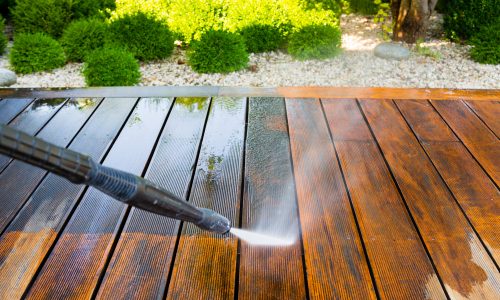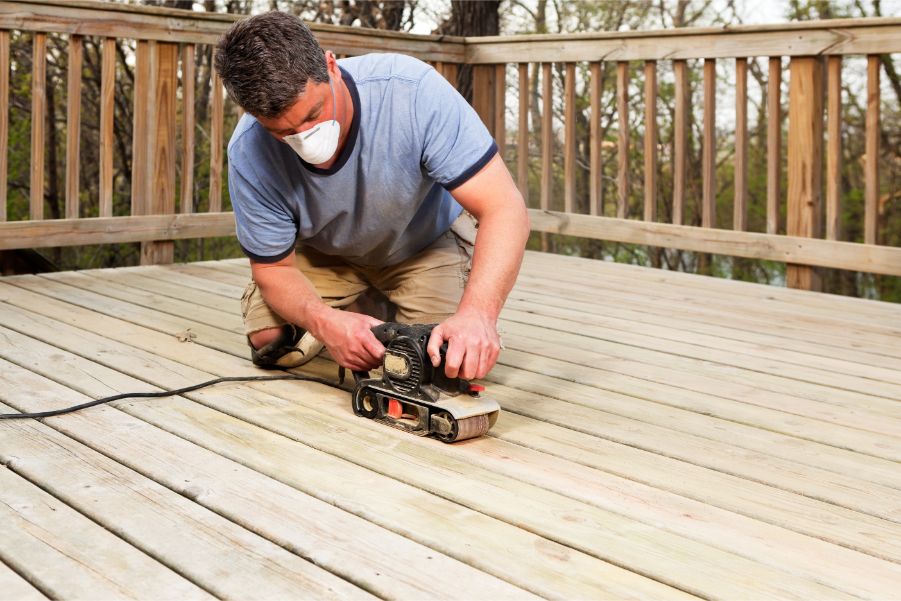Deck Staining 101: Whatever You Need to Know for a Do It Yourself Task
From preparing the deck surface area to selecting the right kind of stain and understanding the application techniques, each action plays an important role in attaining an expert coating. Join us as we decipher the crucial guidelines and expert ideas for mastering the art of deck discoloration, ensuring an effective DIY task that will leave your deck looking impeccable.
Relevance of Deck Discoloration
Deck staining is an essential maintenance job that protects the longevity and look of outdoor wood structures. By using a layer of discolor to the deck's surface area, you produce a protective barrier that helps avoid wetness infiltration, UV damages, and rotting of the timber.
It provides a possibility to personalize the appearance of the deck by picking from a selection of stain colors and coatings. In significance, routine deck staining is a simple yet effective means to ensure your deck remains structurally audio and aesthetically pleasing for years to come.
Deck Prep Work Steps

After cleaning and repairing, sanding the deck is essential to ravel rough surfaces and open up the timber's pores to far better absorb the discolor. Utilize a coarse-grit sandpaper adhered to by a finer grit for a polished finish. When the deck is tidy, completely dry, and smooth, shield any nearby plants, furniture, or surfaces with a ground cloth prior to using the deck tarnish. Following these preparation actions diligently will result in a beautifully stained deck that is well-protected and aesthetically pleasing.
Selecting the Right Spot
Choosing the suitable discolor for your deck is an important choice that directly affects both its appearance and longevity. When choosing the appropriate tarnish, there are numerous aspects to take into consideration to make sure an effective DIY project.
Firstly, you require to make a decision between clear, semi-transparent, and solid stains. Clear stains allow the all-natural grain of the wood to reveal through yet use minimal defense against UV rays and dampness. Semi-transparent spots provide a concession in between color and security, while solid spots offer the most defense but cover the timber grain.
Next, take into consideration the sort of timber your deck is made of, as different discolorations work much better with certain timber varieties. Cedar and redwood decks commonly look finest with a clear or semi-transparent tarnish to highlight their natural appeal. Pressure-treated timber might take advantage of a strong tarnish to hide blemishes.
Lastly, aspect in the environment look at here in your location. Choose for a discolor with UV defense and resistance to severe climate conditions if you experience harsh winter seasons or intense sunshine. By very carefully taking into consideration these components, you can choose a stain that enhances your deck's looks and long life.

Using Discoloration Correctly
When thinking about the application of tarnish to your deck, it is vital to pay very close attention to chainlink the specific qualities of the tarnish picked and how it engages with the kind of timber and ecological conditions previously pondered. Before beginning the discoloration process, guarantee that the deck surface area is tidy, completely dry, and devoid of any previous finishes or particles. It is advised to examine the chosen stain on a small inconspicuous area of the deck to guarantee compatibility and attain the desired color and surface.
When using the tarnish, make use of a sprayer, brush, or roller , following the producer's directions for the particular item. Operate in workable sections to avoid lap marks and ensure even protection. Use the stain along the length of the deck boards to avoid uneven pooling. It is important to collaborate with the wood grain to improve the all-natural charm of the deck and enable much better infiltration of the discolor. Ultimately, consider applying a second coat if required for a much more sturdy finish and enhanced security against the aspects.
Upkeep and Treatment Tips

An additional important facet of deck ornamental aluminum fence maintenance is protecting it from the components. Think about using a water-resistant sealer every few years to secure the timber from wetness damages. Moreover, addressing any type of mold and mildew or mildew promptly is vital to prevent them from triggering structural injury to your deck. On a regular basis trimming close-by vegetation can also avoid fallen leaves and branches from accumulating on your deck and triggering prospective damages.
Conclusion
In final thought, deck discoloration is an important step in keeping the look and long life of your exterior area. By appropriately preparing the deck, selecting the right stain, using it properly, and complying with maintenance pointers, you can ensure a resilient and stunning finish that will last for many years to find. Remember to regularly inspect and care for your tarnished deck to maintain it looking its best.
Join us as we unravel the important standards and expert pointers for understanding the art of deck discoloration, ensuring a successful DIY task that will certainly leave your deck looking impressive. - deck staining companies near me
In essence, routine deck staining is a basic yet reliable means to guarantee your deck continues to be structurally audio and visually pleasing for years to come.
Once the deck is tidy, dry, and smooth, protect any type of nearby plants, furnishings, or surfaces with a decline fabric before using the deck discolor.Next, take into consideration the type of timber your deck is made of, as different discolorations work much better with particular wood types.When thinking about the application of stain to your deck, it is essential to pay close interest to the specific features of the stain picked and exactly how it connects with the type of wood and ecological problems previously pondered.